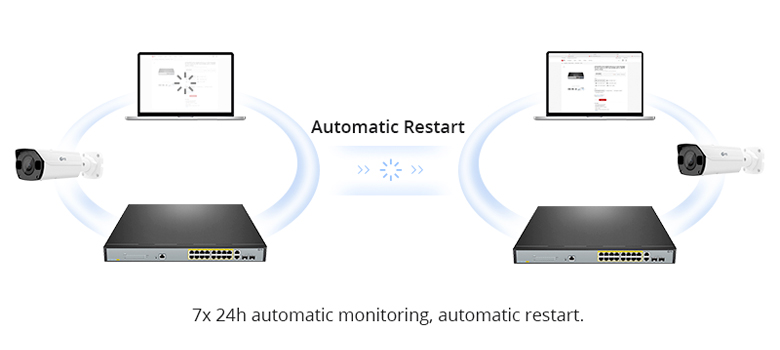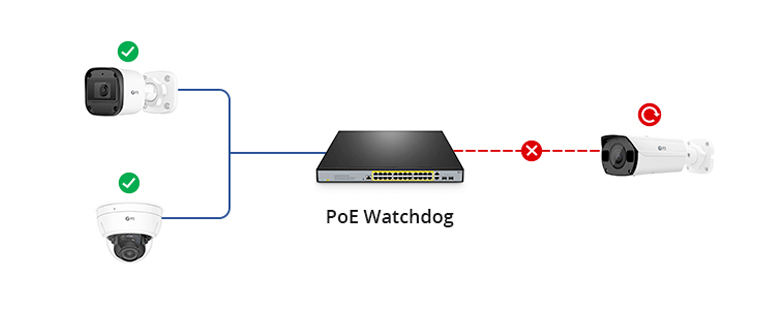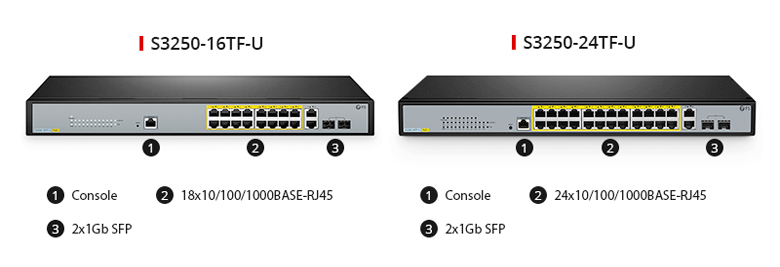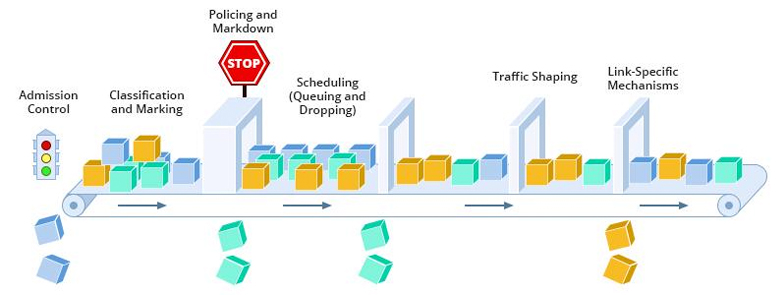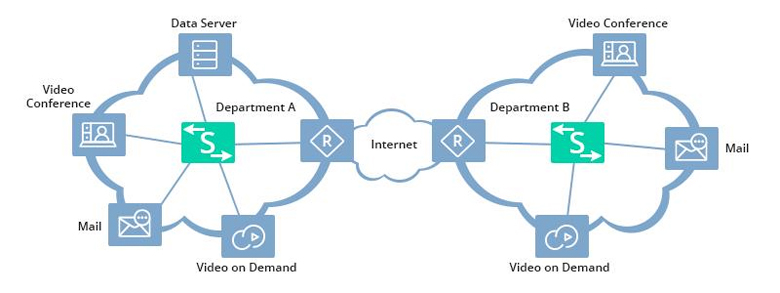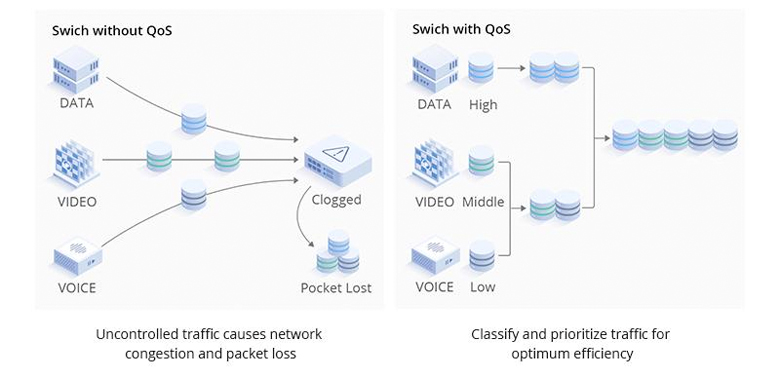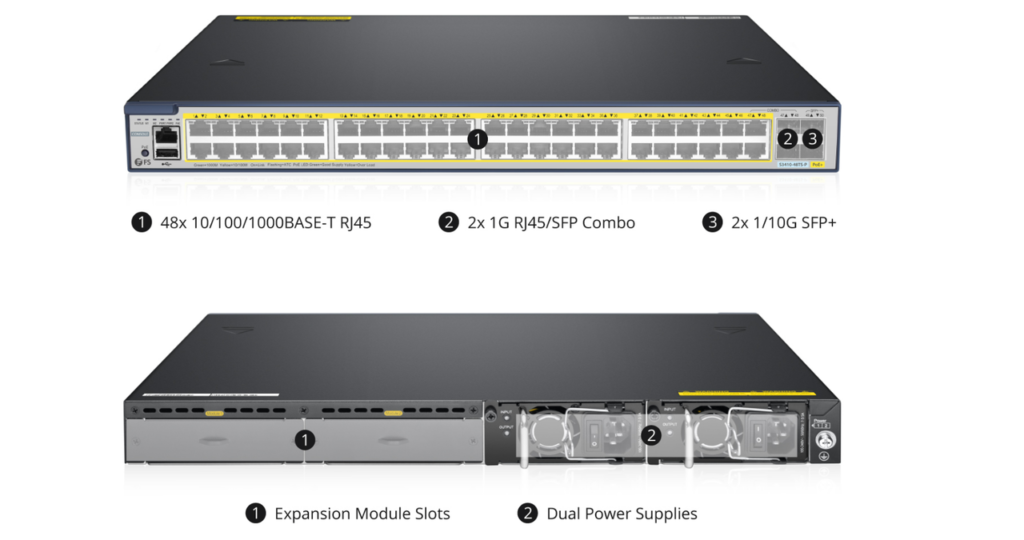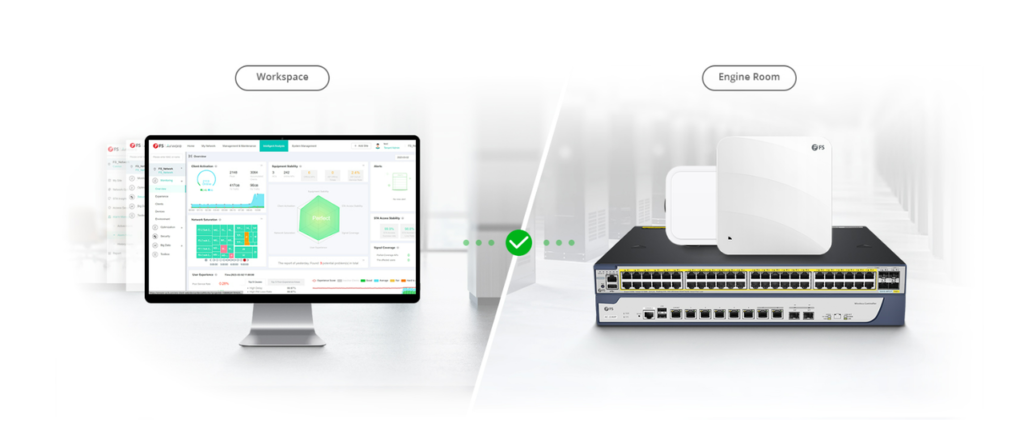PoE+ switches significantly decrease costs and complexity, simplifying the management and upgrade of both power and data networks, meeting the demands of various scenarios in SMBs. In order to maintain a competitive edge in the market, small businesses must maximize the value of every dollar spent. With superior network operability and reliability, PoE+ switches enable SMBs to optimize their investments. Stackable PoE+ switches, which amalgamate two or more network switches into a single logical device, offer even greater advantages compared to conventional PoE+ switches, presenting expanded possibilities for network infrastructure development.
What Stackable PoE+ Switches Bring to Your Network
Streamline Network Management
As multiple network switches combine to form a single logical device, only one IP address is needed for configuration and management by the network administrator. This unified approach simplifies management tasks and expands the total bandwidth and switch ports of the stack significantly. PoE+ switches are commonly deployed in the access layer, connecting powered devices (PDs) such as wireless APs, VoIP phones, and printers. Stackable PoE+ switches facilitate easier management at the access layer, thereby enhancing work efficiency.

Enhance Network Reliability
Stacking PoE+ switches enables redundant backup across devices and multiple uplinks on different physical switches. In the event of a hardware failure on a member of the switch stack, only the physical interfaces of that switch are affected. The uplinks and access ports of the other switches remain online, ensuring continuous service availability. Consequently, even if some PoE+ ports or devices fail, the network’s normal operation is guaranteed, thus enhancing overall network reliability.
Boost Network Expansion Capability
As the use of wireless APs, security cameras, and VoIP phones becomes more prevalent, the addition of more PD devices and PoE+ ports to existing network topologies is a common requirement. Stackable PoE+ switches facilitate seamless expansion of port numbers and bandwidth, thereby enhancing system processing capabilities. Moreover, modern stackable PoE+ switches offer additional features, such as support for switch stacking across all ports or stacking PoE and non-PoE switches. These advancements significantly enhance the existing PoE+ network expansion capability.
Minimize Investment Costs
Stackable PoE+ switches enable convenient port and bandwidth expansion, thereby reducing initial investment costs while maintaining the integrity of the original network planning structure.
Recommendation for Stackable PoE+ Switches from FS
FS releases a series of stackable PoE+ switches with different ports and power standards from 15.4W to 90W per PoE port, meeting a wide range of applications for SMBs. Here are the basic PoE+-related specifications.
| S3410-24TS-P | 3410-48TS-P | S5810-48TS-P | S5860-24XB-U | S5500-48T8SP | |
| RJ45 Ports | 24 x 100/1000M | 48 x 100/1000M | 48 x 100/1000M | 24x 100M/1000M/2.5G/5G/10G-T | 48 x 100/1000M |
| Fiber Ports | 2 x 1G SFP (2 Combo)2 x 10G SFP+ | 2 x 1G SFP (2 Combo)2 x 10G SFP+ | 4 x 10G SFP+ | 4 x 10G SFP+4 x 25G SFP28 | 8 x 10G SFP+ |
| PoE Ports | 24 x PoE+ | 48 x PoE+ | 48 x PoE+ | 24 x PoE++ | 48 x PoE+ |
| Max. PoE Budget | 740W | 740W | 740W | 740W | 740W |
| Management Layer | Layer 2+ | Layer 2+ | Layer 3 | Layer 3 | Layer 3 |
| Stacking | Up to 4 Units | Up to 4 Units | Up to 8 Units | Up to 2 Units | Up to 4 Units |
| Mixed Stacking | Support | Support | Support | Support | Not Support |
Note: Mixed stacking means the PoE+ switch can stack with other stackable models within the same switch series. For example, the S3410-24TS-P and S3410-48TS-P PoE+ switches can be mixedly stacked. The S5810-48TS-P PoE+ switch can stack with other S5810 series non-PoE switches. The S5860-24XB-U multi-gig PoE++ switch can be mixedly stacked with the S5860-20SQ non-PoE switch, and it also supports stacking via any 10G/25G ports.
Related Articles:
FS 24-Port PoE Switch: Power Your Network for High-quality VoIPManaged vs Unmanaged Switch: Which One Can Satisfy Your Real Need?
Understanding IEEE 802.3bt High Power PoE (Hi-PoE)FS S5860-24XB-U PoE Switch Guarantees High-reliability Power Supply

